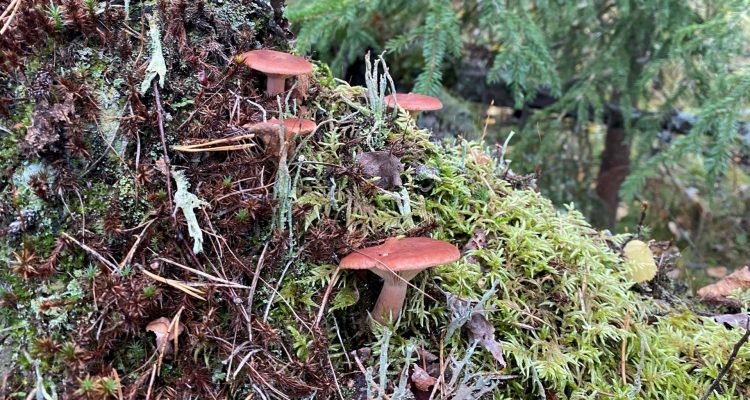Do you know how to identify milkcaps? Milkcaps are easily identified by droplets of milky liquid they exude when they are cut. Foraging season for the milkcaps in Finland falls between July and October. You can still find some late mushrooms such as orange milkcaps from Finnish forests.
The following descriptions of different milkcaps are meant for inspiration, and they should not be used as the only source for identification. I’m still learning, and I’m fascinated by the amount of food that Finnish forests provide.
Important reminder: You need to identify the mushrooms you eat with 100% certainty. Do not trust Google Lens or any apps to identify mushrooms for you. You also need to have the knowledge to cook them right. We take no responsibility for damage caused by wrong identification or preparations. If you are beginner with mushrooms, ask someone to confirm your identifications. It is not possible to identify them by picture only.
How to identify the most common milkcaps in Finland
Let’s look at some of the most common milkcaps in Finland:
- Rufous milkcap (Lactarius rufus)
- Woolly milkcap (Lactarius torminosus)
- Pap milkcap (Lactarius mammosus)
- Ugly milkcap (Lactarius turpis)
- Northern milkcap (Lactarius trivialis)
- Orange milkcap (Lactarius aurantiacus)
- Velvet milkcap (Lactarius lignyotus)
Rufous milkcap (Lactarius rufus)
The rufous milkcap, kangasrousku in Finnish, was the first milkcap I ever learned to forage as it is a mushroom my mom likes to preserve and use. It is dark brick red in color and grows often in groups in dry pine forests. It is quite common throughout the country and can be identified by white milky liquid when it’s cut. The cap is 3-10 cm in diameter and stem about 4-10 cm in length. The stem is the same color as the cap, or only slightly lighter.
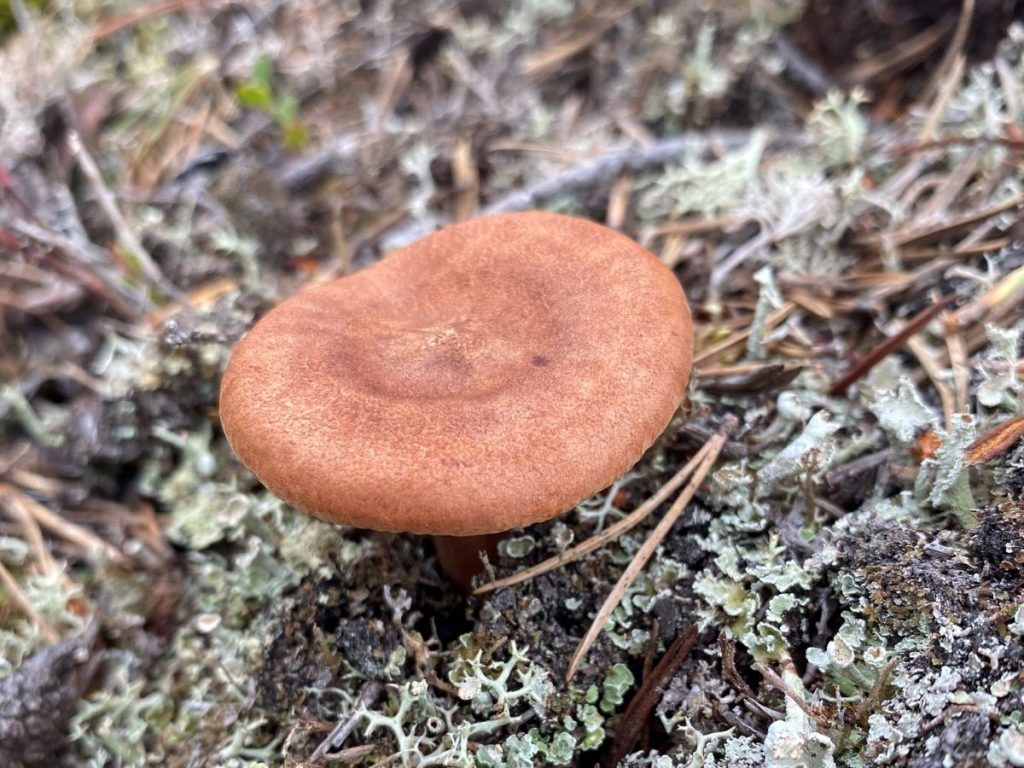
There is no distinctive odor but a mild taste that soon becomes extremely hot and acrid. Because the rufous milkcap is easy to find, it has traditionally been used a lot in Finland despite of the bitter and peppery taste. Most European countries would list this as an inedible mushroom, but we Finns have our own kind of cuisine. You should note that it does require at least 10 minutes of boiling before use. After boiling it can be pickled in vinegar or stored in salt water. Milkcaps are the best in creamy mushroom salads with onion. They can also be stored frozen after boiling, and then they are easily utilized for mushroom salad later.
Fun fact: Reindeers like to eat rufous milkcaps in Lapland. Sometimes it’s hard to find these milkcaps in areas where reindeer live.
Cortinarius rubellus, commonly known as the deadly webcap, might look like the rufous milkcap from the top, but it doesn’t have very white milky liquid inside. Make sure you don’t mix especially those two together. A few other similar looking milkcaps are lighter and smaller birch milkcap (Lactarius tabidus), curry milkcap (Lactarius camphoratus), pap milkcap (Lactarius mammosus), and unedible fenugreek milkcap (Lactarius helvus). The fenugreek milkcap is mildly poisonous and quite common throughout the country. It doesn’t exude white liquid, but clear. It has an aromatic smell that reminds of licorice. In Finnish it’s known as licorice milkcap, lakritsirousku.
Woolly milkcap (Lactarius torminosus)
The woolly milkcap is a beautiful mushroom with peachy color and rings on its cap. Its cap is 5–15 cm wide and stem 2–8 cm long. The woolly milkcap, karvarousku or karvalaukku in Finnish, gets its name from the woolly appearance. It grows near birch trees everywhere in Finland.
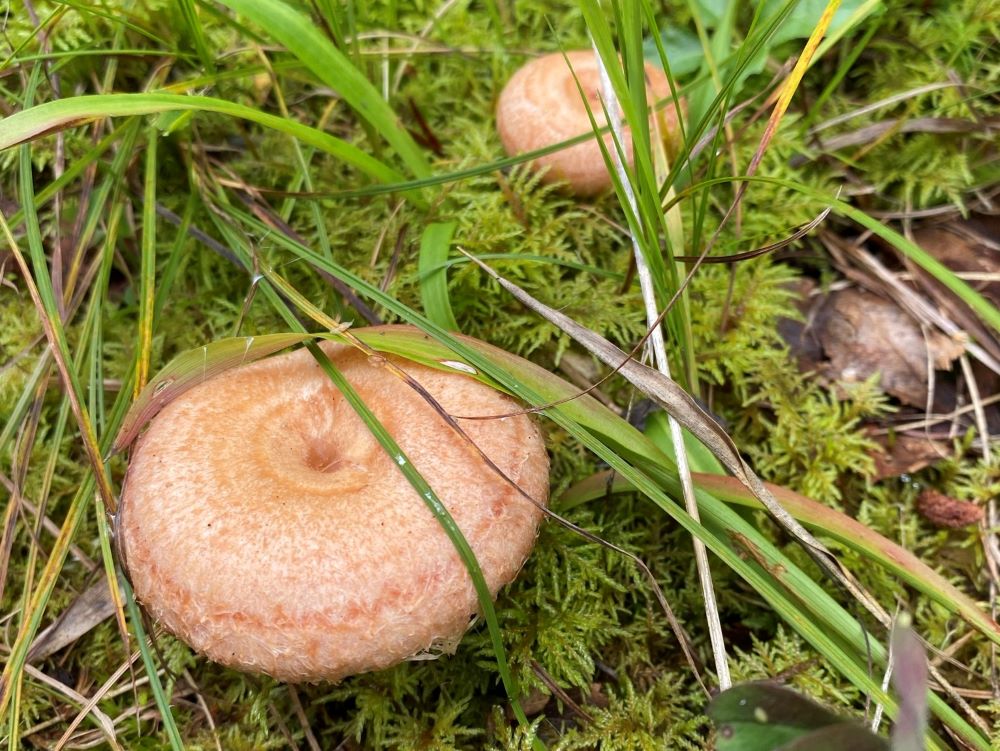
The woolly milkcap is used similarly to the rufous milkcap. It is valued for its peppery flavor, but it is highly irritating to the digestive system if eaten raw. The toxins, also responsible for the strongly bitter taste, are destroyed by 10 minutes of boiling.
Pap milkcap (Lactarius mammosus)
I love coconuts and especially the smell of them. There are few milkcaps that can smell like coconut. This is a pap milkcap, kangaspalsamirousku in Finnish. It is common in northern parts of the country, but it can also be found in the south. It can be stored and used the same way as other previously mentioned mushrooms, but it doesn’t require boiling before the use. Boiling dilutes its taste.
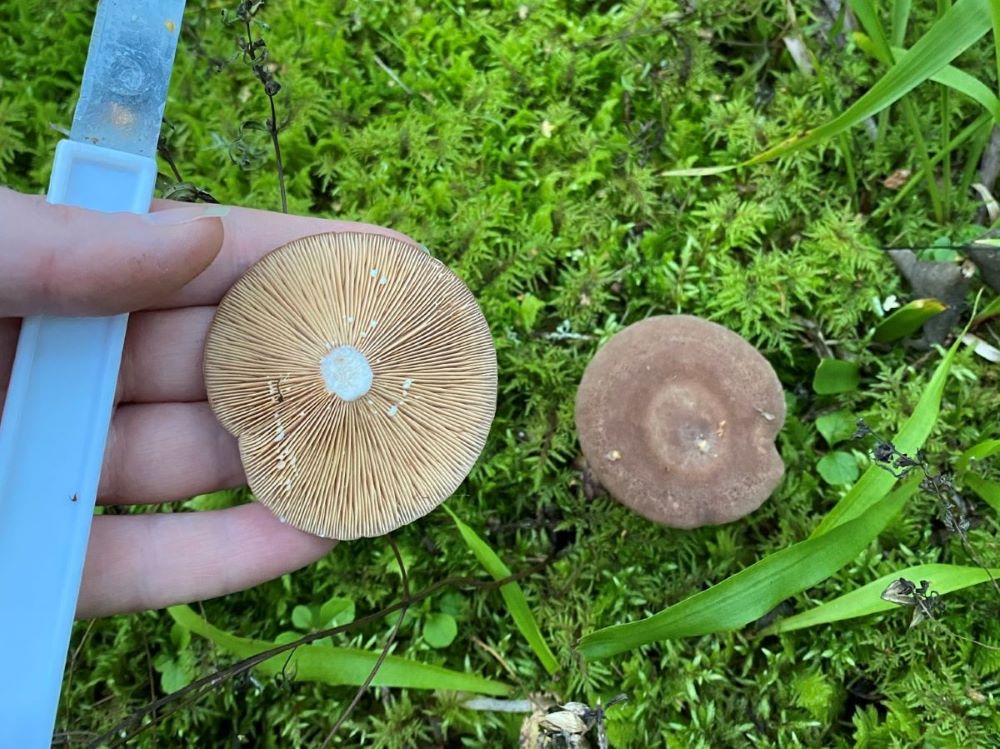
There is another mushroom that can smell like coconut. Coconut milkcap (Lactarius glyciosmus) is smaller, but usually it has an even stronger coconut smell. It can be used the same way, with or without boiling. It is known viitapalsamirousku in Finnish.
Ugly milkcap (Lactarius turpis)
The ugly milkcap is not the prettiest mushroom I know, but ugly is a little harsh. In Finnish, this one is known as mustarousku, black milkcap. It is best identified by its dark color that lightens to green towards the edges. It also exudes white milky liquid.
It’s worth noticing that this species is reported to contain the mutagen necatorin. Boiling reduces the concentration of this compound but does not effectively eliminate it. In some countries the ugly milkcap is considered inedible, but in Finland the mushroom is only recommended not to be eaten several times a week. And it should be boiled for 10 minutes before use.
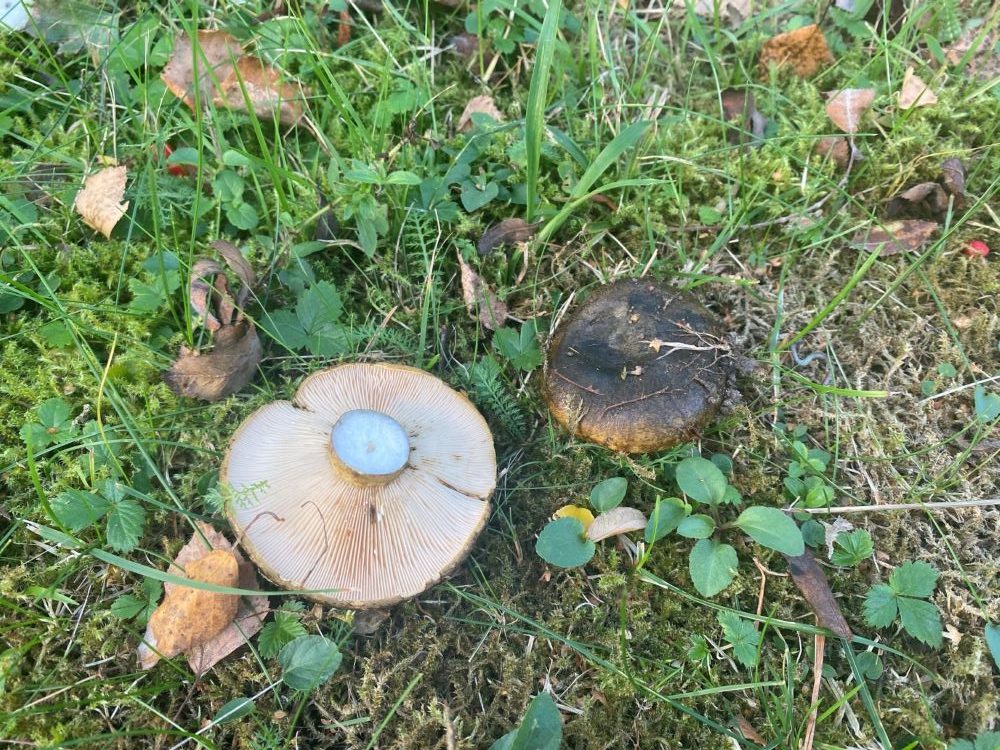
Do not mix the ugly milkcap with a roll-rim (Paxillus involutus). The roll-rim, pulkkosieni in Finnish, is a poisonous mushroom that is brown in color. The easiest way to identify the milkcaps from the roll-rims is to cut into their gills. The roll-rim’s gills will turn dark in color, and they don’t exude any milky liquid.
Northern milkcap (Lactarius trivialis)
Another one of my mom’s favorites is the northern milkcap, which is quite a large mushroom as its cap can be 6–20 cm in diameter. The cap’s color is greyish brown. The stem is a lighter color and hollow. The gills are white and exude a characteristic white latex when damaged. This one is known as haaparousku in Finnish, and it can be found everywhere in Finland. It should be boiled for 5 minutes before use.
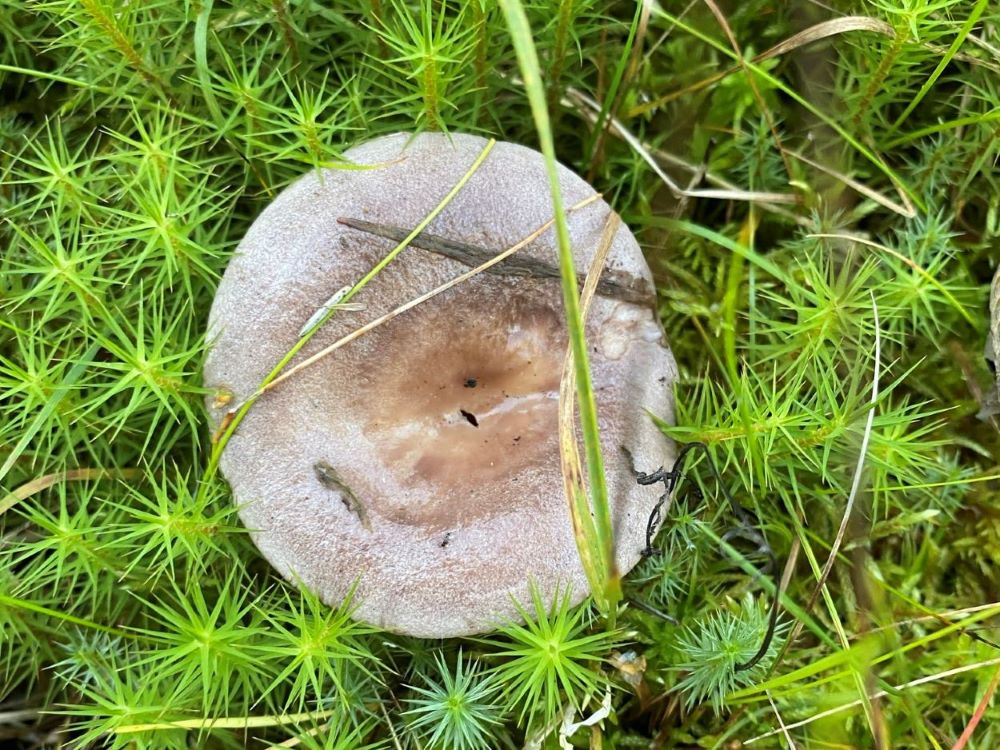
The northern milkcaps are among the most popular milkcaps foraged in Finland, but easily mixed with others. Grey milkcap (Lactarius vietus), harmaarousku, is smaller than the northern milkcap and can be identified by its latex, which turns grey. Lactarius uvidus, korpirousku, is rarer and stains violet when the mushroom is bruised. The earlier mentioned inedible fenugreek milkcap (Lactarius helvus) could be mixed with all of these. It exudes clear liquid, and it is slightly poisonous.
Orange milkcap (Lactarius aurantiacus)
The orange milkcap, oranssirousku, is a late mushroom and can be found from August to even November in Southern Finland. It grows in lush groves or spruce forests, sometimes in similar places as funnel chantarelle. It is orange in color with 2-6 cm wide cap, and it exudes milky liquid. The orange milkcap is a considered a good mushroom to eat, but requires 5 minutes of boiling before the use.
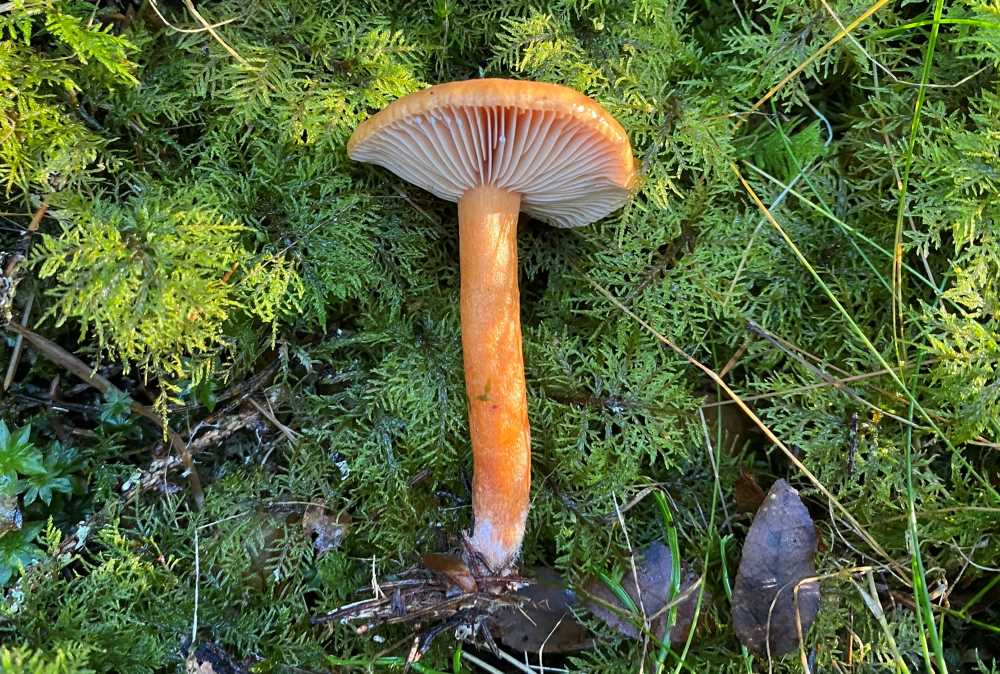
Velvet milkcap (Lactarius lignyotus)
The velvet milkcap is known as nokirousku in Finland and considered as excellent mushroom to eat. It is more common in southern Finland than in the north. It’s not easy to encounter. It has thin and long stem, and white-colored gills. The cap is 2–10 cm wide. The velvet milkcap has white liquid that slowly turns into red.
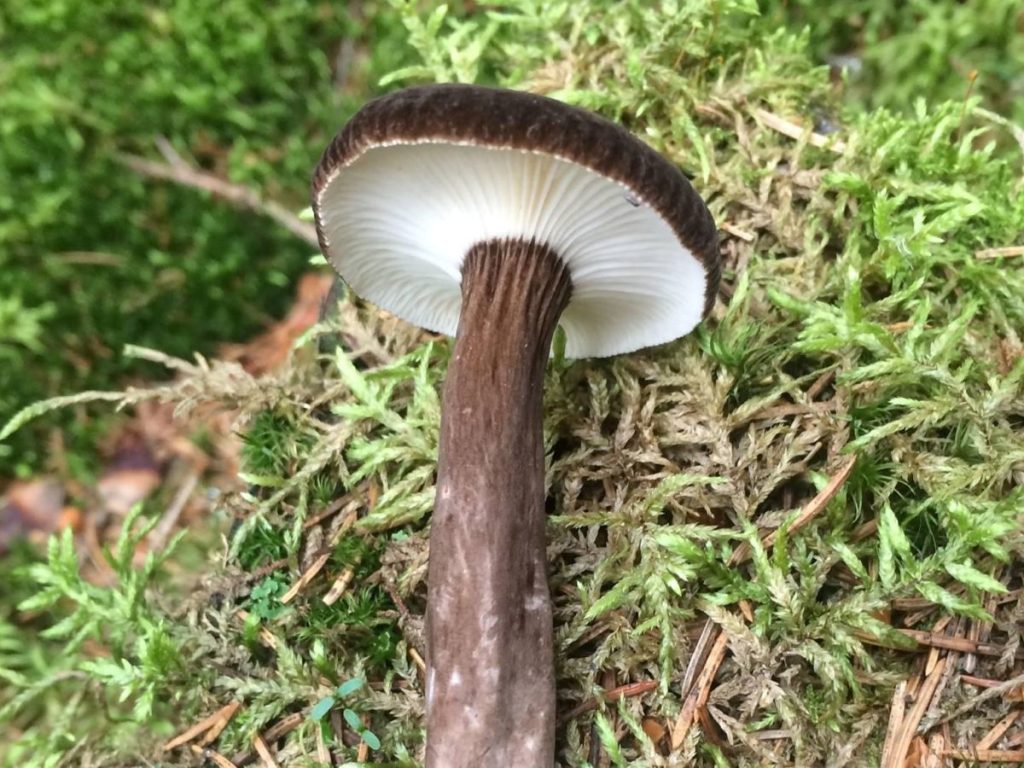
Do you like foraging mushrooms? Are milkcaps your thing or are you still learning how to identify different milkcaps from one another?
Read also
- Out in the Nature Quiz – How well do you know Finnish mushrooms?
- Out in the Nature Quiz – Another fun mushroom quiz
- Foraging for the most common mushrooms in Finland
- How to identify edible boletes in Finland
- How to tell chanterelle and false chanterelle apart
- What is the difference between true morels and false morels?
- Colorful brittlegills are a fascinating family of mushrooms
- Cep or bitter bolete? How to tell the difference
- How to dress and what you need for foraging berries or mushrooms
- Watch out for the deadliest mushrooms in Finland

